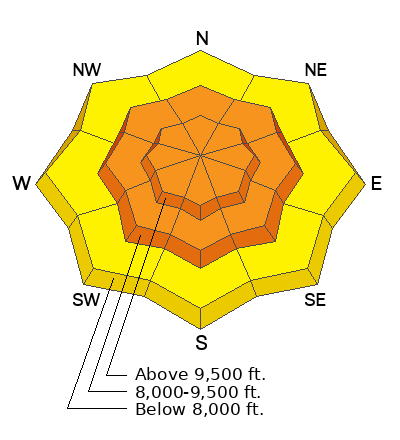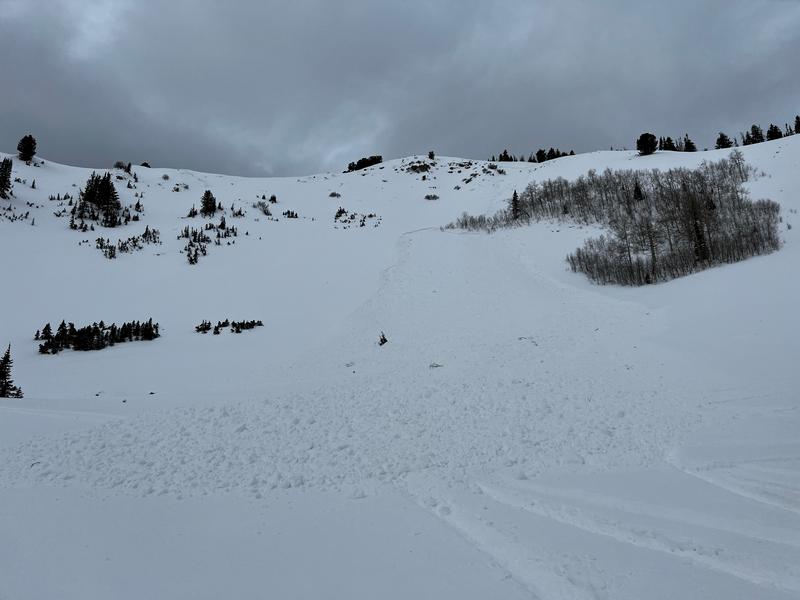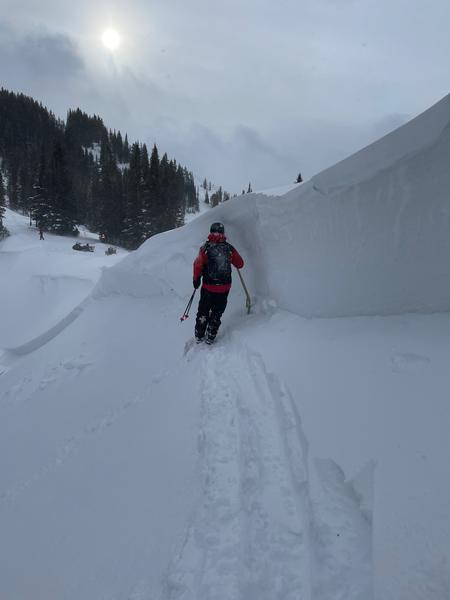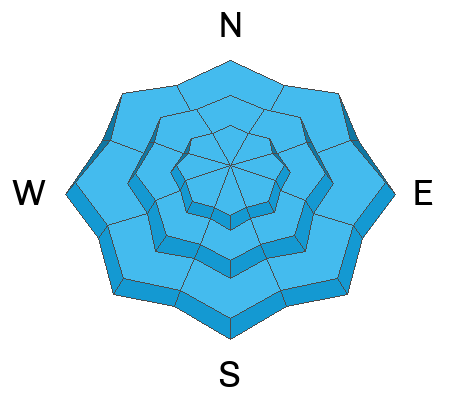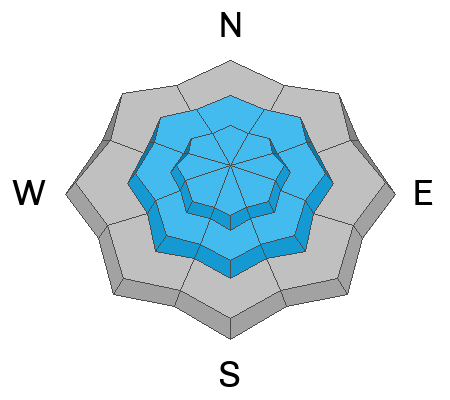Join the Utah Avalanche Center and the Utah Division of Outdoor Recreation to celebrate the Fourth Annual Avalanche Awareness week from December 4 - December 11. Click
HERE to view the full list of events for the week.
Under overcast skies with light snow falling mountain temperatures are in the 20's F. Winds are calm at lower elevations blowing westerly into the low teens MPH at the 9000' ridgelines. New snow blankets the Wasatch from the top of the mountains all the way to the valley. Ski areas reported a trace of new snow.
For today, snow 3-6" forecasted with periods of up to 1" an hour this morning. Temperatures 24-28 F with westerly winds 15 gusting to 25 MPH at the 9000' ridgelines and 25 gusting to 40 MPH at the 11,000' ridgelines. There will be a couple of waves of precipitation throughout the day. Expect to see periods of clearing followed by bursts of snow. Freezing level is forecast to be around 6400'.
There was an observation of a snowbike triggered avalanche on an east aspect at 9400' on Ant Knolls. This avalanche was
18" deep and approximately
50' WIDE. This avalanche was remote triggered from 1000' away from the bottom of the slope.
Photo: Jed
Yesterday the UAC joined Park City Snow Safety to look at an
avalanche that was triggered late in the day on Saturday December 4th. This avalanche was within Park City Ski Area's boundary in closed terrain that is representative of a backcountry snowpack. This avalanche is one of the biggest reported thus far on the November drought layer.
Photo: deepest part of the crown 6' (Park City Snow Safety)
We continue to see deep
avalanches reported by backcountry skiers and ski patrols. These avalanches will only get bigger as we add more snow and wind to an already weak layer. Yesterday we went to look at an avalanche near the Brighton periphery that ran into the flats on an east facing slope off Clayton Peak. The wind was continuing to re-load this slope and is a location where we are likely to see skier triggered avalanches in the future. Remember that as soon as you leave the ski area boundary you are in backcountry terrain.

